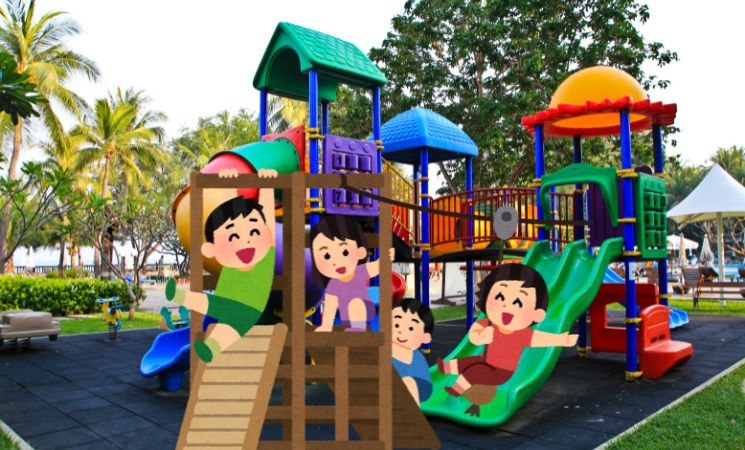The essence of childhood is often captured by the spirited laughter and joyous shrieks that emanate from playgrounds. These outdoor arenas are more than mere physical infrastructures; they are hubs of imagination, activity, and social interaction among children. In recent years, there has been a transformative shift in the design and provision of playground equipment, shaping how children engage with outdoor play environments.
The Evolution of Playground Design
Historically, playgrounds were dominated by static, metal structures; simplicity was key, and the emphasis was less on creativity. However, the approach to constructing playground environments has undergone a significant change. Designers and educators have recognised that playgrounds should encompass a broad spectrum of experiences that cater to diverse physical abilities and developmental needs.
Introducing Innovation in Playground Spaces
One of the most exciting aspects of modern playground design is the infusion of innovative play equipment. Today’s playgrounds have evolved into dynamic spaces, offering a variety of activities that encourage children to climb, balance, swing, and explore. This has been propelled by an increased understanding of child development, acknowledging that play is a critical aspect of learning and growth.
Safety and Accessibility
As innovation takes centre stage in playground equipment manufacturing, safety and accessibility remain paramount considerations. Advances in materials and thoughtful design have produced equipment that is not only stimulating and engaging for the young ones but also adheres strictly to safety standards. Rubber surfacing, for instance, has replaced concrete, dramatically reducing the incidence of play-related injuries. Furthermore, inclusivity in playground designs ensures that children with varying abilities can enjoy the benefits of outdoor play.
Incorporating Nature Into Play
Another significant trend in contemporary playground design is the integration of natural elements. This harmonious blend of nature and play structures enhances the aesthetic appeal as well as the sensory experience of the playground. Naturalistic settings often include wooden structures, landscaping that encourages imaginative play, and the incorporation of water and sand elements, all of which help children develop an appreciation for the natural world.
Educational Value of Playgrounds
Modern playgrounds are increasingly being recognised for their educational value. The strategic use of playground equipment, when paired with a well-thought-out design, can support the development of crucial cognitive and motor skills. Problem-solving, creativity, and social skills are inherently fostered in a well-designed play area, underscoring the role of innovative playgrounds in children’s holistic development.
Fostering Social Interaction
Beyond the individual benefits, playgrounds with innovative designs promote social inclusion and interaction. Equipment that encourages group play supports children in building relationships, learning about cooperation, and developing empathy. This aspect of playground design recognises that social skills are as important as physical and cognitive skills in the context of childhood development.
Environmental Consciousness
In the age of environmental awareness, playground equipment manufacturers are increasingly attentive to their ecological footprint. The use of sustainable materials, recyclable components, and environmentally friendly manufacturing processes is becoming commonplace. This commitment not only ensures that playgrounds are safe and enjoyable for children but also that they are contributing to a sustainable future.
The Role of Technology in Playground Equipment
Technology has not been left behind in the innovation of playground spaces. Interactive playground equipment that incorporates light, sound, and even digital components are starting to emerge. Such high-tech installations can provide a unique blend of physical activity with an engaging digital experience, thereby catering to the diverse interests of children in our technologically-driven age.
Community and Stakeholder Involvement
The design and installation of innovative playground equipment are often the result of collaborative efforts involving community members, local councils, and educational professionals. This inclusive approach ensures that playgrounds are tailored to the needs and desires of the communities they serve and that they become cherished parts of the local landscape.
Conclusion
Playgrounds are in the midst of a renaissance, with innovation driving the design and development of new-age playground equipment. From prioritising safety and accessibility to integrating technology, contemporary playgrounds are spaces that not only facilitate physical activity but also enhance cognitive development and social skills. As the purveyors of childhood experience continue to push the bounds of creativity and inclusivity, playgrounds will undoubtedly remain vital landmarks in the fabric of communities, fostering growth and joy for generations to come.
Looking Forward
As we progress further into the 21st century, the importance of outdoor play in the lives of children is only set to increase. Innovations in playground equipment and designs will continue to play a crucial role in providing meaningful and enriching play experiences. By embracing these developments, communities can ensure that they are offering their youngest members the best possible start in life, all while laying the groundwork for healthy, active, and engaged adults.













